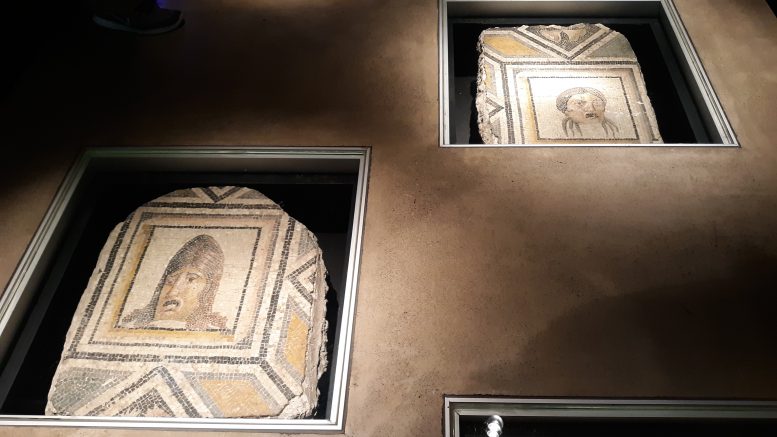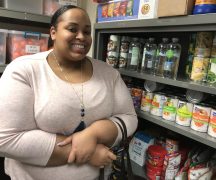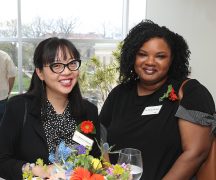By JAN LARSON McLAUGHLIN
BG Independent News
The 2,000-year-old artifacts looted from Turkey and sold to BGSU are being carefully packed up for their trip home.
Officials from BGSU and Turkey shared the stage Tuesday morning to talk about how history is being righted with the return of the ancient art.
“It is clear today that the best place for these is in the Republic of Turkey,” BGSU President Rodney Rogers said.
The Turkish officials were grateful.
“I know BGSU could have prolonged this process if they wanted to,” said Umut Acar, consul general for Turkey.
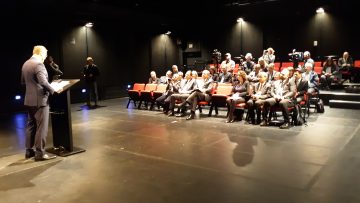
Turkish Consul General Umut Acar speaks at BGSU.
The story of the mosaics is part history, part mystery.
Dr. Stephanie Langin-Hooper, one of the people who solved the mystery of the mosaics, pieced together their story.
About 2,000 years ago, a Roman family built a home in the area of Zeugma on the banks of the Euphrates River, said Langin-Hooper. They had a luxurious dining room floor created with custom mosaics of handcut stone and glass. The mosaics were a “marvel of artistic creation,” with intricate images of Bacchus the God of wine, theater masks and exotic birds.
“Fast forward to the early 1960s,” Langin-Hooper said. “Zeugma and all of its glorious villas had long since fallen into ruin and been buried by the sands of time.”
The artifacts were lost – except to looters, who were interested in profits not preserving art. Using crude methods, like pickaxes and sledgehammers, the looters removed at least 12 of the mosaic images and smuggled them out of Turkey. They were shipped halfway across the world.
They ended up in an antiquities gallery in New York City, where they were fraudulently labeled with the provenance of a legal excavation in Antioch. It was there that BGSU officials spotted them and legally purchased them for $35,000.
When the mosaics made a re-debut in 2011 at the newly constructed Wolfe Center for the Performing Arts at BGSU, a new professor on campus – Langin-Hooper – started researching the artifacts. She was assisted by Professor Rebecca Molholt of Brown University.

Dr. Stephanie Langin-Hooper talks after press conference.
“Together we began to suspect the truth,” said Langin-Hooper, who is now at Southern Methodist University in Texas.
The mosaics were not artifacts delicately removed and sold with legitimate documentation – but rather art that had been illegally looted and smuggled out of Turkey.
It has been seven years since the discovery.
“Today is a triumph,” Langin-Hooper said. “The looted masterpieces get to go home.”
The Turkish government sent over a delegation of officials to accept the mosaics and accompany them home. The news of the artifacts returning was broadcast live on Turkey TV.
Though the mosaics had been restored and were being displayed in the arts building, BGSU officials knew they needed to be returned, said Ray Craig, dean of the college of arts and sciences.
“They will be reunited with the mosaic known as the ‘gypsy girl,’” Craig said.
Together, they will be displayed in the Zeugma Mosaic Museum in the city of Gaziantep.
“Repatriation to Gaziantep is the right thing to do,” Craig said. “As a public university, it’s our responsibility to create public good.”
And that responsibility does not end at the U.S. borders, Rogers said.
“BGSU has a special obligation,” Rogers said. “That commitment extends to the world.”
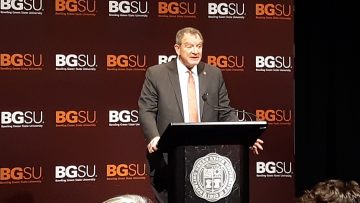
BGSU President Rodney Rogers
Langin-Hooper called the return of the artifacts a triumph for those who want to stop looting that continues till today.
“How do we stop this destruction of the past – like this,” she said. It took just two weeks of research to discover that the origin of the mosaics had been misrepresented.
Langin-Hooper also praised the willingness of BGSU to relinquish the artwork.
“This is a triumph for the people of Ohio. Today, you are on the right side of history,” she said.
Acar thanked BGSU officials for taking such good care of the mosaics, and for displaying them so beautifully. Tuesday was the first day for Acar to see the mosaics in their lighted exhibit embedded in the floor.
“It’s amazing. It’s impressive,” he said.
After the public press conference, Acar said the mosaics will be displayed with a detailed description of their travels around the world and back home.
“Everyone will know about the story. They will all know about BGSU,” he said.
The Turkish government has also promised to have replicas created of the mosaics and then send those back to BGSU so they can fill the holes created by the return of the original mosaics. He estimated it may take three to four months for those to be made.
Also after the press conference, Acar talked about other artifacts that are missing, and some that are tied up in the legal process to be returned.
“Not every one is finding a happy ending,” he said.
Acar, who presented BGSU officials will gifts of Baklava and a copper coffee set, hinted at the possibility of an ongoing friendship with the university – perhaps as a “sister city.”
“I believe that this is the beginning of a long-term relationship,” he said.

